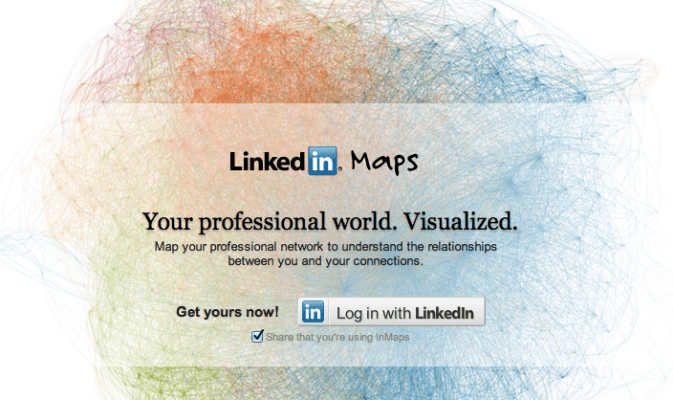A little autumn cleaning underway at LinkedIn. The company is quietly retiring InMaps, a tool that let you map out how your LinkedIn network looks. A notice on the InMaps homepage notes that today, September 1, is the last day for you to use it, and that it is being discontinued so that LinkedIn “can focus on developing new ways to visualize your professional network.” As of right now, if you want it, you can still download and save your own map for posterity.
A slightly longer note in LinkedIn’s help pages explains a bit more:
Sometimes we have to retire tools we love so we can focus our attention and resources on creating even better experiences for our members. We’re currently looking at new ways to help you visualize and gain insights from your professional network. That’s why we’re discontinuing InMaps as of September 1, 2014.
A little background on InMaps: the service was first launched in January, 2011 as a way for you to look at different clusters in your network, color code them, and see where they may cross over with each other, with separations happening often around current and previous jobs, education, social circles and so on. Through this you could also interact, by clicking on hubs to see different profiles.
InMaps was built by Ali Imam, once a transplant from Yahoo Analytics who eventually became a LinkedIn principal data scientist at for a short stint. Three months short, to be exact: by July of this year, Imam had left LinkedIn for Cloudera. (He’s not the only person on the data science side departing LinkedIn of late — Deep Nishar, SVP of Product, is also leaving the company.)
It’s not clear how popular InMaps as a product has been (LinkedIn Labs, it seems, has not). But generally, LinkedIn, now with 313 million users, has been making other moves to rethink how users of its platform interact with the data contained on it.
While companies like Google and Yahoo have been known for sometimes sweeping spring cleans, LinkedIn’s garden, perhaps less overgrown, has needed a lot less pruning.
For LinkedIn, the name of the game right now seems to be more focus on its platform and core experience — or at least trying to steer into what exactly that core experience could or should be. That has included, for better or worse, more restricted access of the company’s API, cutting off some CRM apps that violate its API terms of service; and changes to products like Rapportive to limit the amount of third-party, non-LinkedIn information that can be viewed via the email widget.
At the same time, it seems like the kinds of analytics and additional insight that LinkedIn offers to you as a user is coming by way of features more directly integrated into your profile rather than features that take you away from LinkedIn’s main platform and apps. One example: the enhanced ability to see how you rank against your peers at the same time that you check in on who has been lurking around looking at your profile page.
And, now that LinkedIn is also looking to grow its B2B marketing services business into a billion dollar operation, it wouldn’t be surprising to see new analytics features get released to fill out that business as well.
